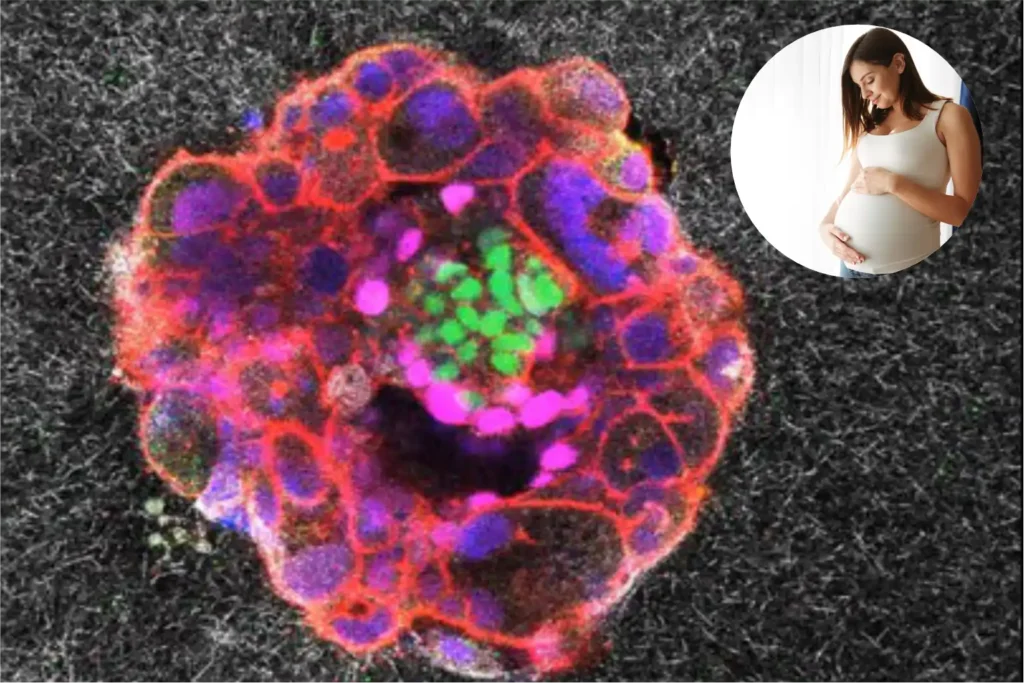
Image of human embryo implantation: For the first time, scientists have recorded real-time, three-dimensional footage of a human embryo implanting into a uterus-like environment, offering unprecedented insight into one of the earliest stages of pregnancy.
The breakthrough was achieved by researchers at the Institute for Bioengineering of Catalonia (IBEC) in collaboration with Dexeus University Hospital in Barcelona, which provided donated embryos. Using a specially developed platform made of collagen and uterine tissue, the team created conditions that allowed embryos to implant outside the womb. This setup enabled them to capture detailed footage and track how the process unfolded.
Also Read | Trying to conceive? Know whether IVF or IUI is better for you
Samuel Ojosnegros, principal investigator of IBEC’s bioengineering for reproductive health group, said the work revealed that human embryos exert considerable force as they burrow into the uterus. “These forces are essential because the embryo must be able to invade the uterine tissue and become fully integrated with it. It is a surprisingly invasive process, and although many women experience abdominal pain or slight bleeding during implantation, the process itself has never been observed before,” he said.
The study showed that, unlike mouse embryos, which simply attach to tissue, human embryos completely penetrate the uterine lining before growing from within. Researchers found that the embryos released enzymes that broke down surrounding tissue while applying traction forces to reorganise the uterine matrix.
Implantation failure is one of the leading causes of infertility, responsible for about 60 per cent of miscarriages. According to the researchers, better understanding of this stage could significantly improve fertility outcomes. “We observe that the embryo pulls on the uterine matrix, moving and reorganising it, and also responds to external forces,” said Amélie Godeau, co-first author of the study. “We hypothesise that contractions occurring naturally in the uterus may play an important role in implantation.”
The findings, which compare implantation in humans and mice, mark the first time the mechanics of human embryo implantation have been visualised in such detail. Scientists say the discovery could transform treatment approaches in infertility, miscarriage prevention and assisted reproductive technologies.
(Source: The Guardian)








